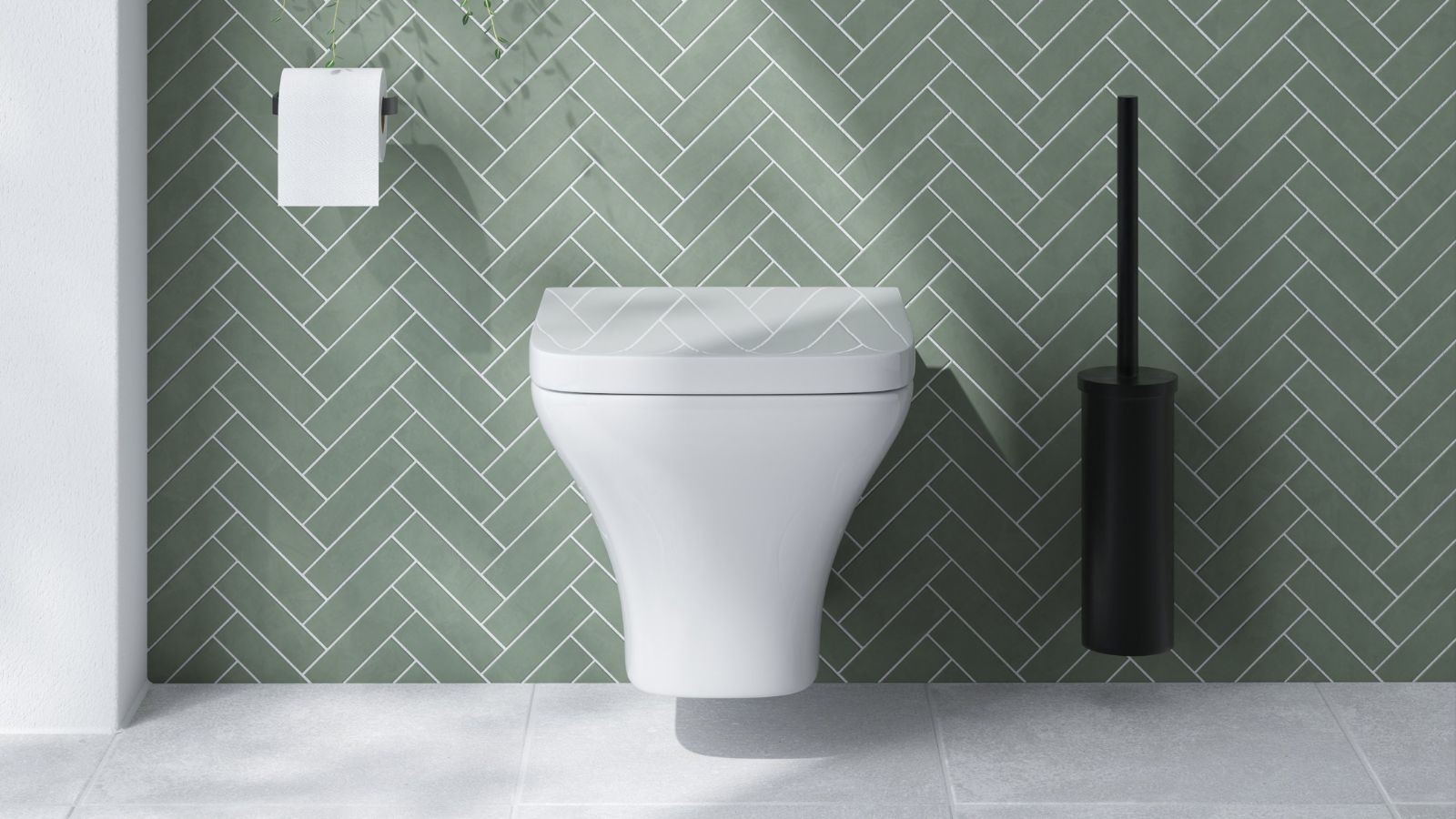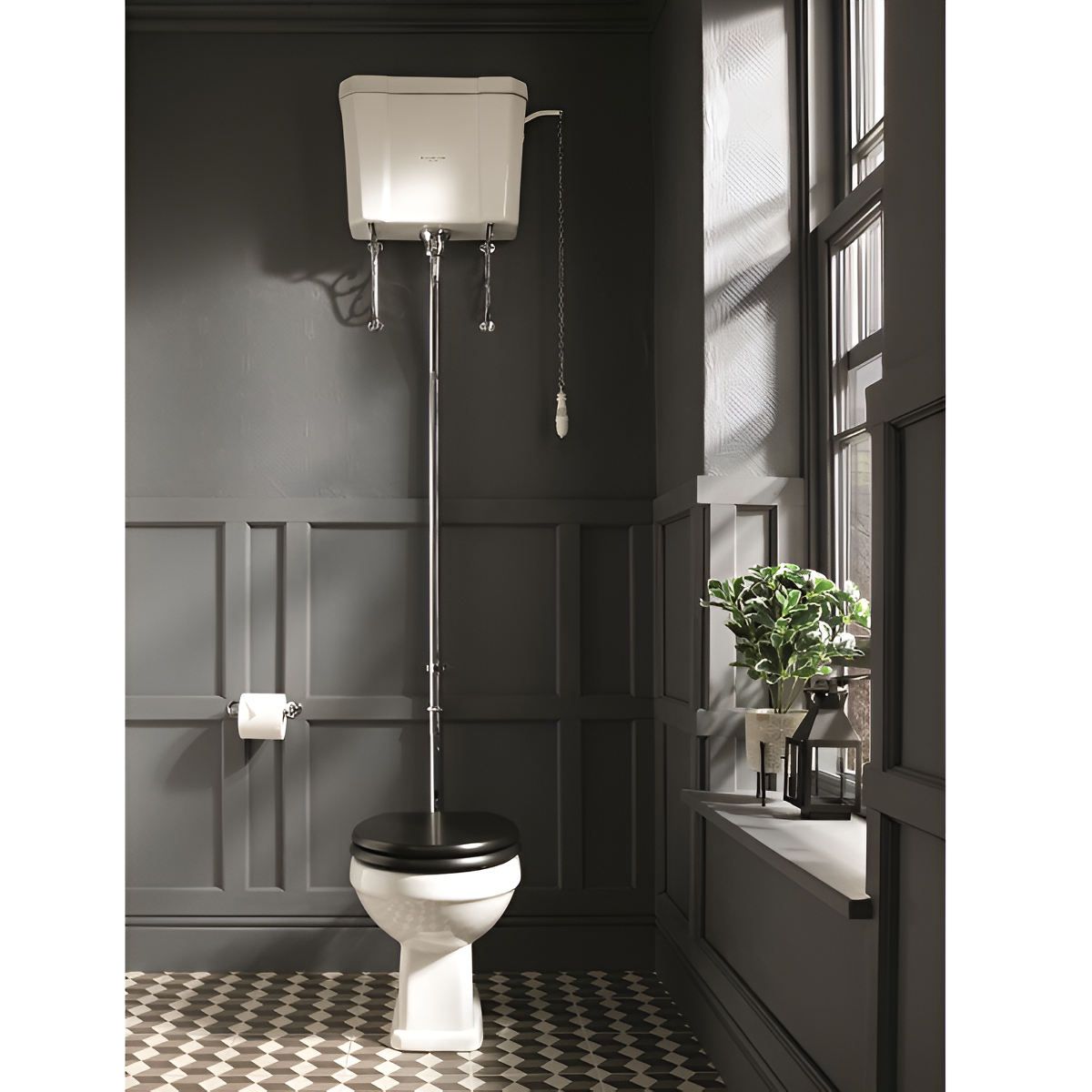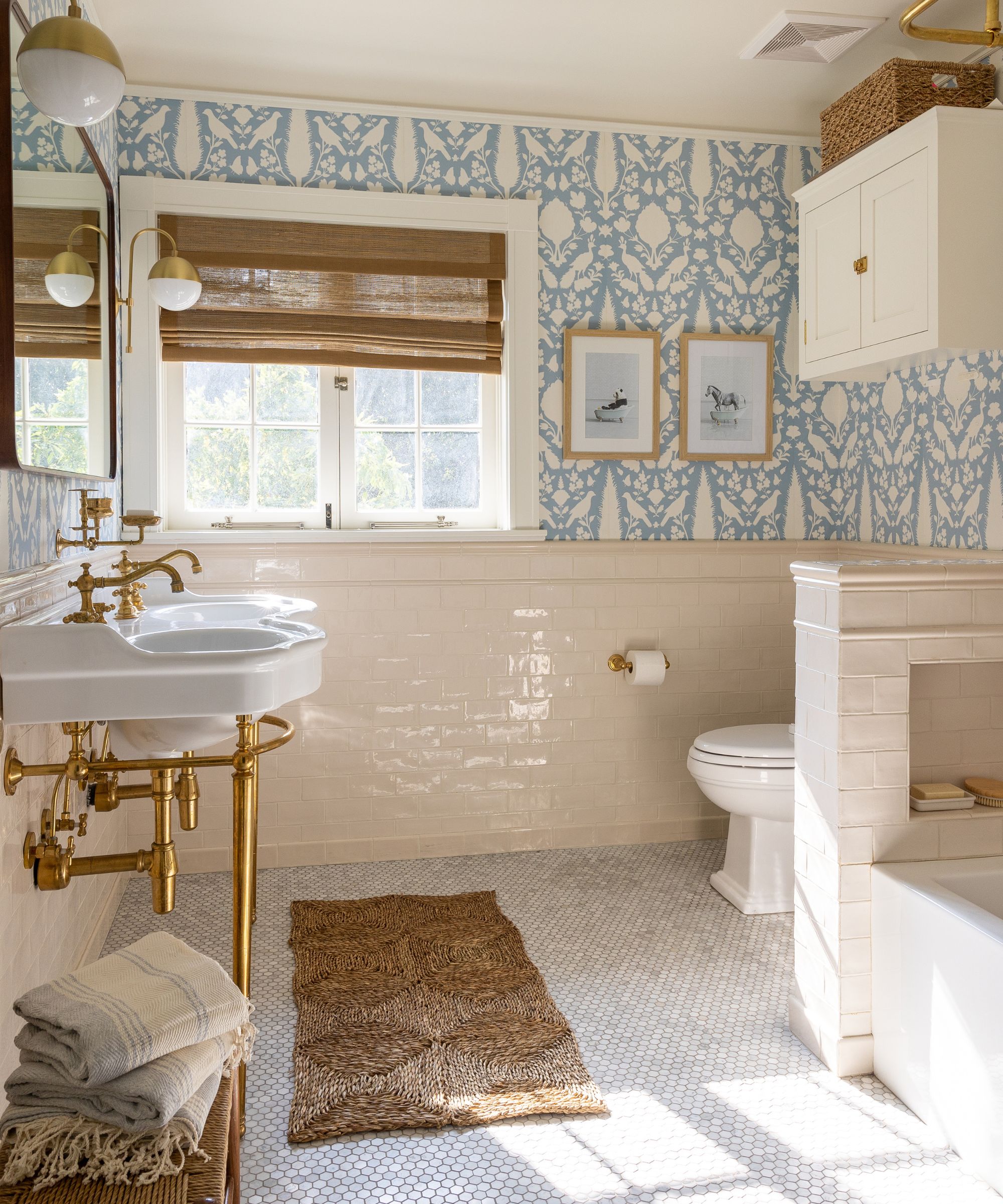
A slow-draining toilet can really throw a wrench in your day. It's a common plumbing issue that seems to pop up at the most inconvenient times, leaving us scratching our heads and wondering what to do next.
Thankfully, getting to know the ins and outs of your toilet's drainage system and learning a few DIY tips and tricks can equip you with the skills necessary to restore order to your bathroom and get your toilet flushing smoothly again.
We asked a professional plumber to explain what might be causing your toilet to drain slowly and how you can troubleshoot the issue in your own bathroom.
How to fix a slow-draining toilet
'A common cause of slow-draining toilets is a clog in the drainpipe,' explains Audrey Monell, President of Forrest Anderson Plumbing and Air Conditioning. 'This could be due to a buildup of toilet paper, waste, or foreign objects.'
What causes a slow-draining toilet?

Identifying a slow-draining toilet is quite straightforward. If you notice that the water takes longer than usual to go down after flushing or if the water level rises alarmingly close to the rim before slowly receding, you're likely dealing with a slow drain.
Another telltale sign is if you hear gurgling sounds or see bubbles emerging from the bowl during or after flushing, indicating disrupted airflow in the drainage system. All of these symptoms suggest that water is struggling to pass through the pipes quickly, often due to a partial blockage or internal issues with your toilet.
DIY methods to fix a slow-draining toilet

'Try using a plunger to dislodge any clogs in the drainpipe,' recommends Audrey Monell. 'Ensure a tight seal around the drain opening and plunge vigorously to create pressure that may break up the clog.'
If you need to unclog a toilet and you don't have a plunger, you could also try using a toilet auger or a drain snake to reach further into the drainpipe and break up the clog. We recommend the Dr. Rooter 18" Flexible Plastic Drain Snake from Walmart, as it's affordable and highly rated. Alternatively, for small blockages, you may have some luck using hot (but not boiling) water or a combination of baking soda and vinegar to dissolve the blockage.
'It is important to inspect your toilet’s internal components as well,' adds Audrey. 'Problems with the toilet's flushing mechanism, such as a malfunctioning flapper or a partial flush, can result in poor water flow and slow drainage. Check for any issues with the flushing mechanism, such as a worn-out flapper or a faulty fill valve, and replace any damaged parts as needed.'
When to call a plumber

'If these DIY methods do not resolve the issue, it's best to call a plumber who can use professional tools and techniques to make a long-term fix,' explains Audrey.
'It's also a good idea to pay attention to the other fixtures in your home. If multiple different fixtures are experiencing slow drainage or backups, it could signal a problem with the main sewer line, which should be addressed by a plumber.'r
FAQs
Can a slow-draining toilet fix itself?
In rare circumstances, a clogged toilet might clear up independently, especially if the blockage is primarily caused by toilet paper. Toilet paper is designed to dissolve in water over time. So, if the clog isn't too severe and consists mostly of toilet paper, giving it some time might allow the paper to break down and disperse in the water, eventually clearing the path for water to flow normally again.
However, a slow-draining toilet typically won't fix itself and usually requires intervention to resolve the underlying cause. For more significant blockages or if the problem persists, manual removal or professional help might still be necessary.
Chemical drain cleaners are incredibly toxic, so while it may not be the most glamorous of purchases, it's worth investing in a plunger for emergencies. Plungers are an affordable way to unclog blockages quickly and efficiently. However, we recommend you purchase two separate plungers – one for use on toilet drains and one for shower and other bathroom drains – to minimize the risk of cross-contamination.







